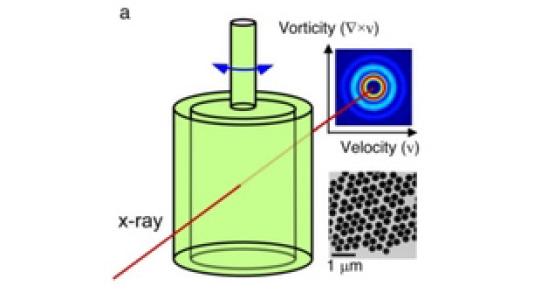
Scientific achievement
This study resolves a long-standing mystery as to why certain shear thickening fluids have an order-to-disorder transition while others do not, and explains the two different mechanisms responsible for this behavior.
Significance and impact
By separating the order-to-disorder transition occurring in a lower stress regime from the standard steady shear thickening occurring in a higher stress condition, this study proves the former is a strain-related behavior and the latter is a stress-driven behavior.
Research details
- Highly monodispersed colloidal fluids were created and exposed to both oscillatory and steady shear conditions.
- The Center for Nanoscale Material’s synthesis capabilities, rheometer and transmission electron microscope (TEM) were used. High-resolution in situ small angle X-ray scattering (SAXS) was performed at the Advanced Photon Source.
Argonne National Laboratory seeks solutions to pressing national problems in science and technology. The nation’s first national laboratory, Argonne conducts leading-edge basic and applied scientific research in virtually every scientific discipline. Argonne researchers work closely with researchers from hundreds of companies, universities, and federal, state and municipal agencies to help them solve their specific problems, advance America’s scientific leadership and prepare the nation for a better future. With employees from more than 60 nations, Argonne is managed by UChicago Argonne, LLC for the U.S. Department of Energy’s Office of Science.
The U.S. Department of Energy’s Office of Science is the single largest supporter of basic research in the physical sciences in the United States and is working to address some of the most pressing challenges of our time. For more information, visit https://energy.gov/science.
